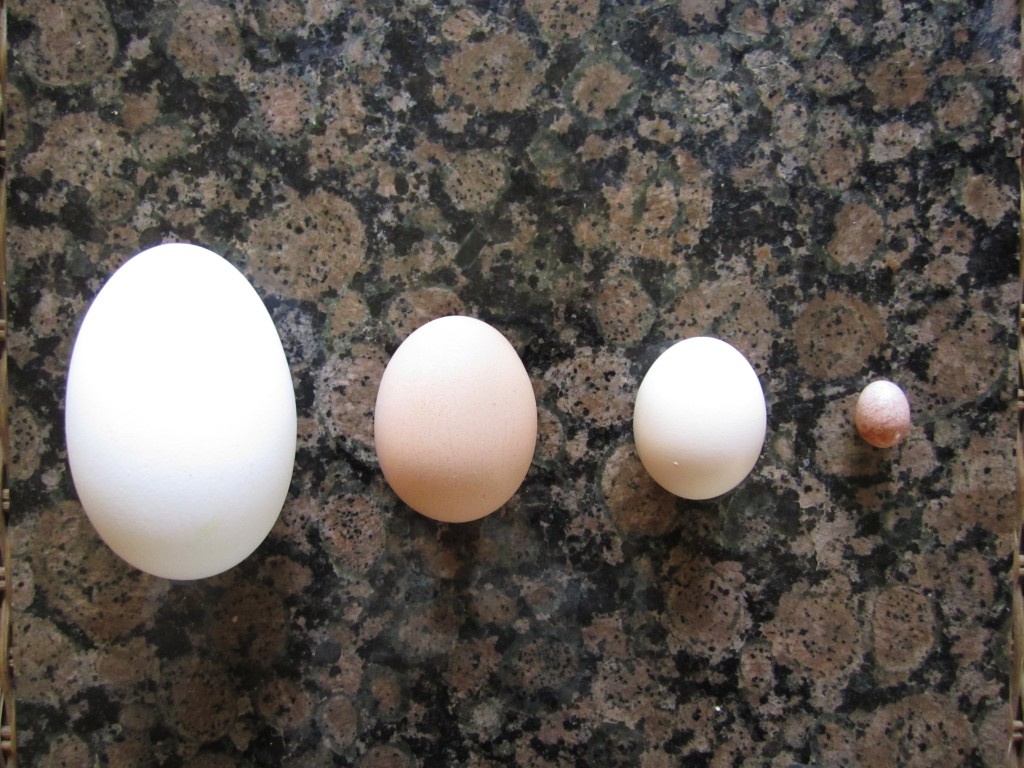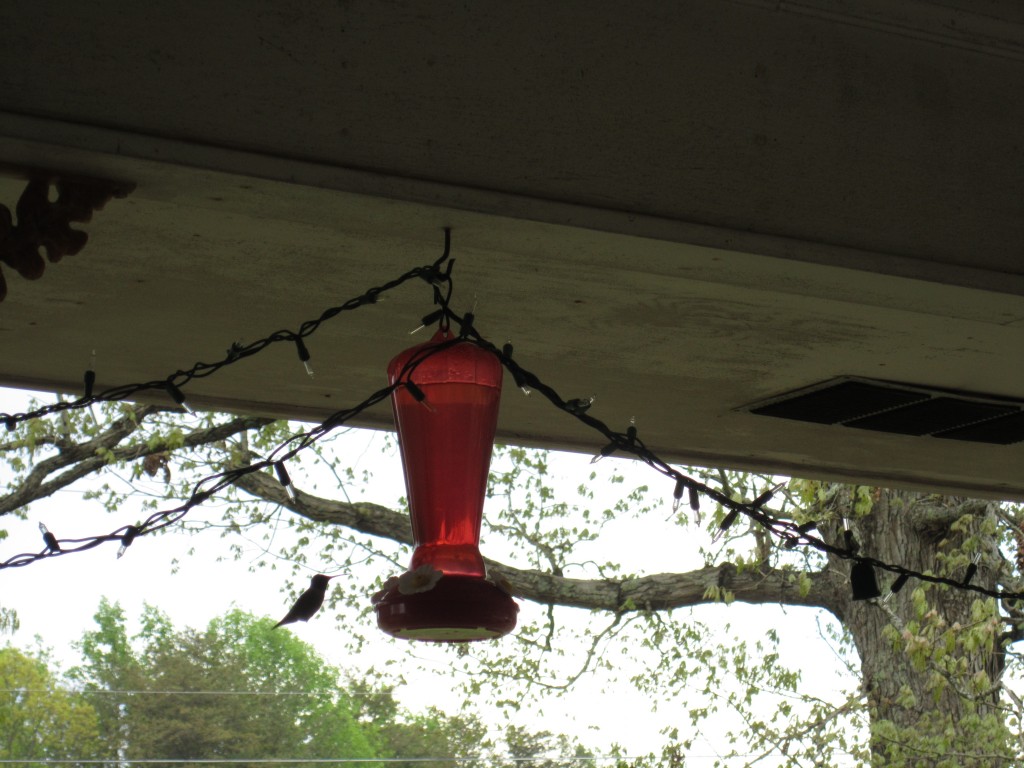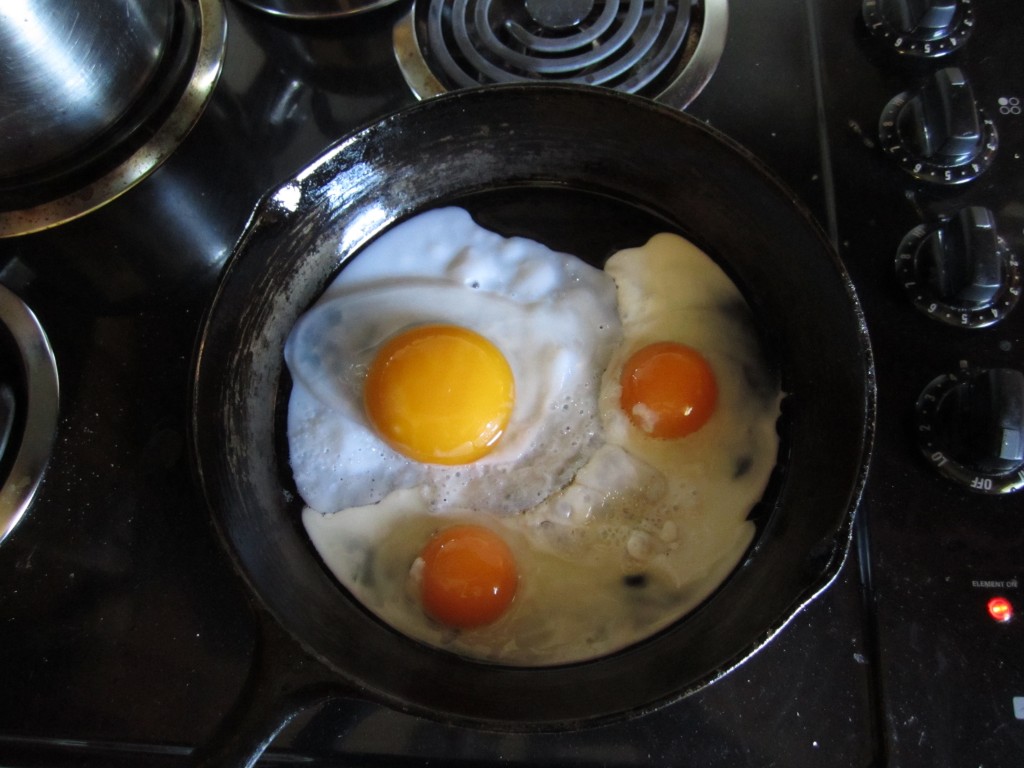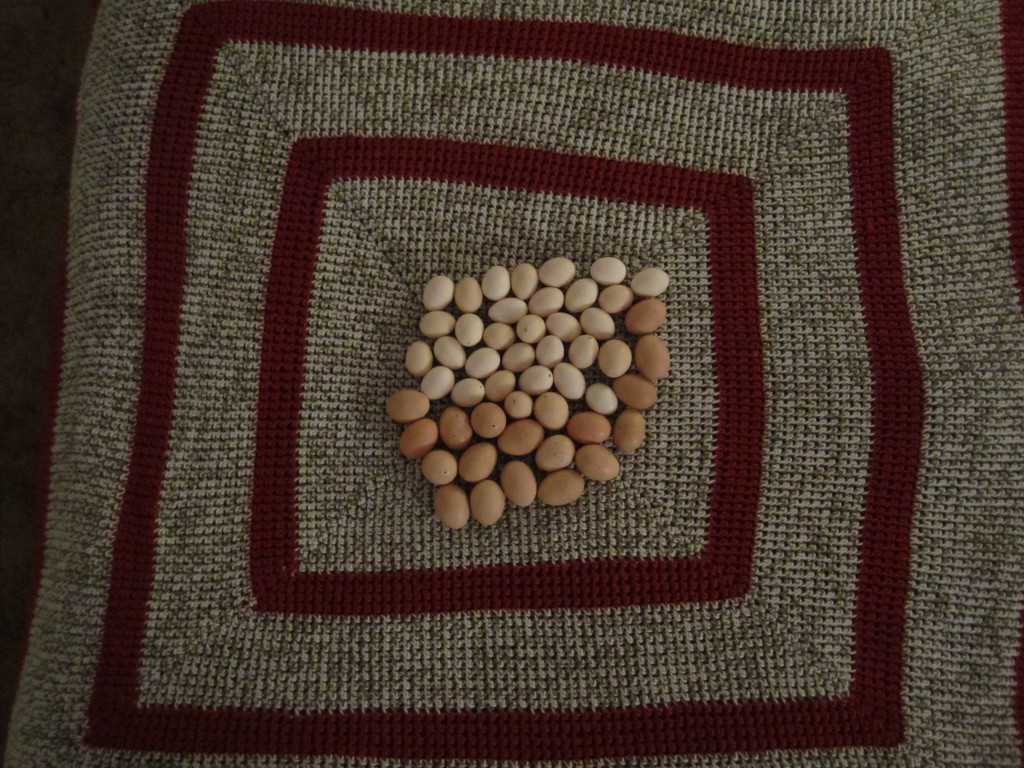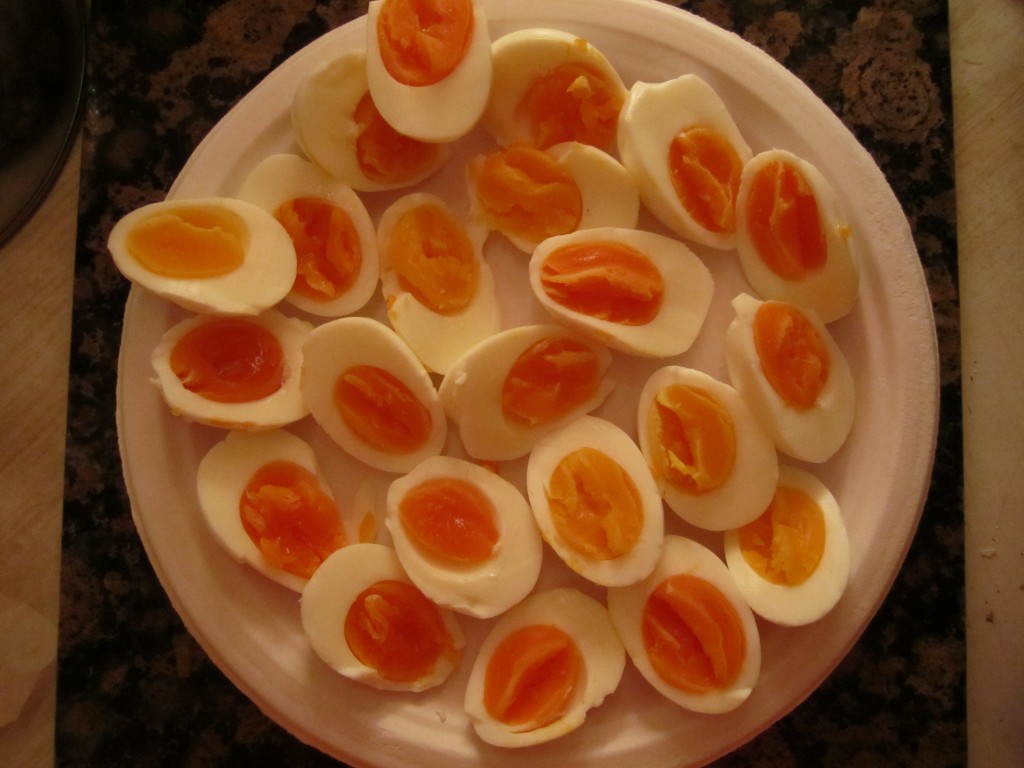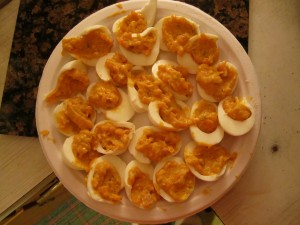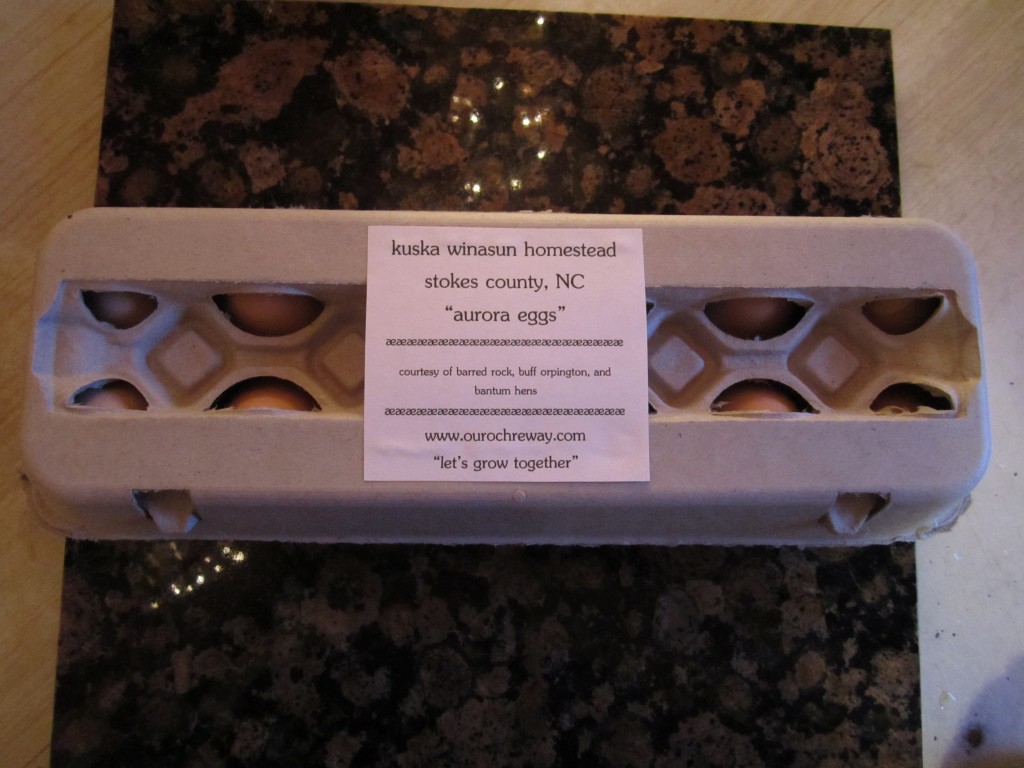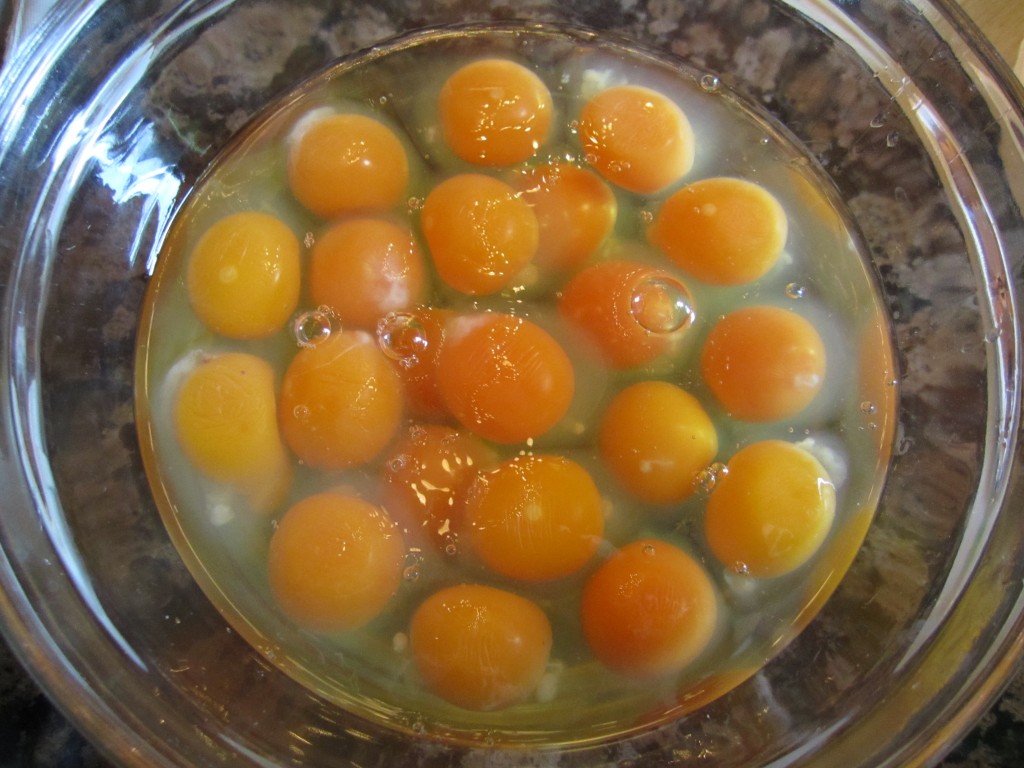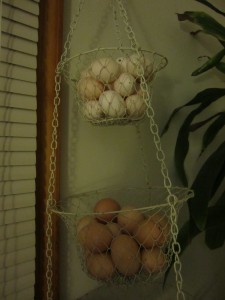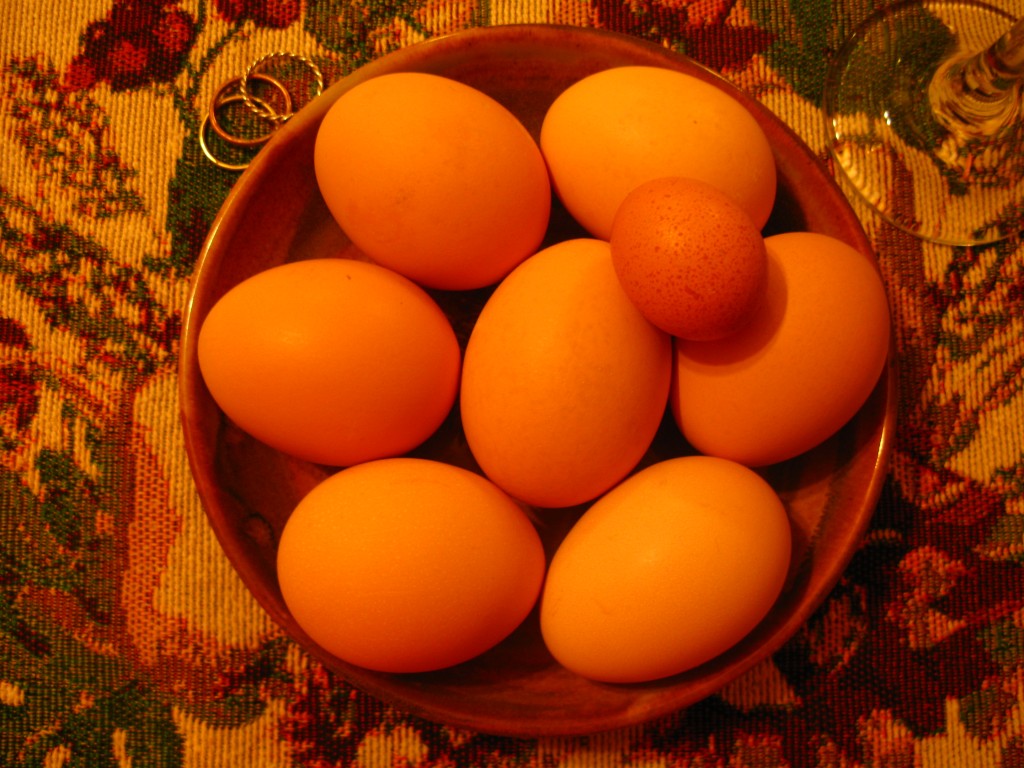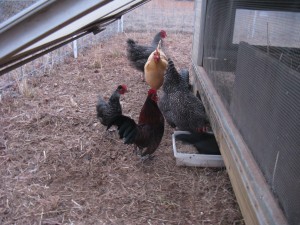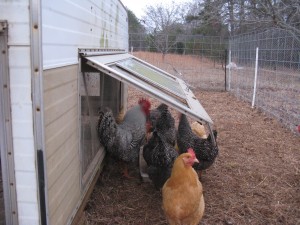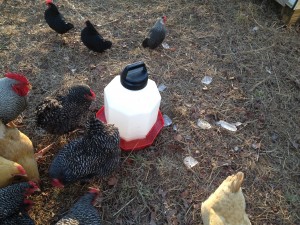The more I watch our 2 flocks of chickens, the more I feel like we should give them each their own space. Right now we have a flock of bantams, and a flock of standards. Each flock has a rooster, and contrary to everything we’d heard, they don’t try to murder each other. True, Rex will chase Roosty around, but he’s way too quick to catch. That goes for Roosty’s hens as well, who find themselves at the bottom of the pecking order, and often are chased off from food and water by the bigger Buff Orpingtons and Barred Rocks.
That’s really the main reason we want to separate them. Maybe if the bantams don’t have to constantly watch their little backs, and have better opportunities at the food dish, we may get some more tiny eggs (not wind eggs!) and maybe hatch out some banty chicks too.
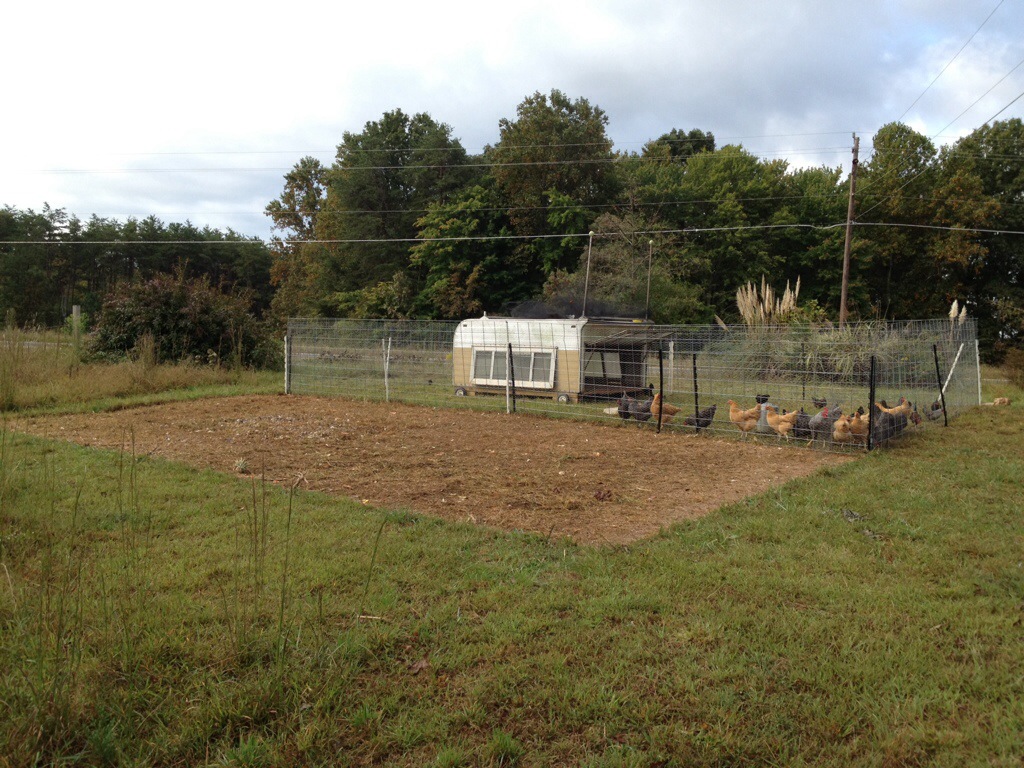
Our mobile chicken coop, right after being moved to fresh pasture.
In order to separate the flocks, we’ll need another chicken coop. Right now our mobile coop and cattle panel paddock system is working great. It measures 32 by 16 feet, has an old camper top on wheels as the coop, and is covered by bird netting to discourage hawks and aerial assaults. We haven’t had any predation issues yet, and we move the birds every two weeks to fresher pasture.
This is great, but does take some time to take down and move (about an hour), and I think the best fit for our bantys would be a lighter, more mobile chicken tractor. Chicken tractors are meant to be moved every day or multiple times a day, and are becoming more popular as people begin to rediscover the importance of pasture raised meat and eggs.
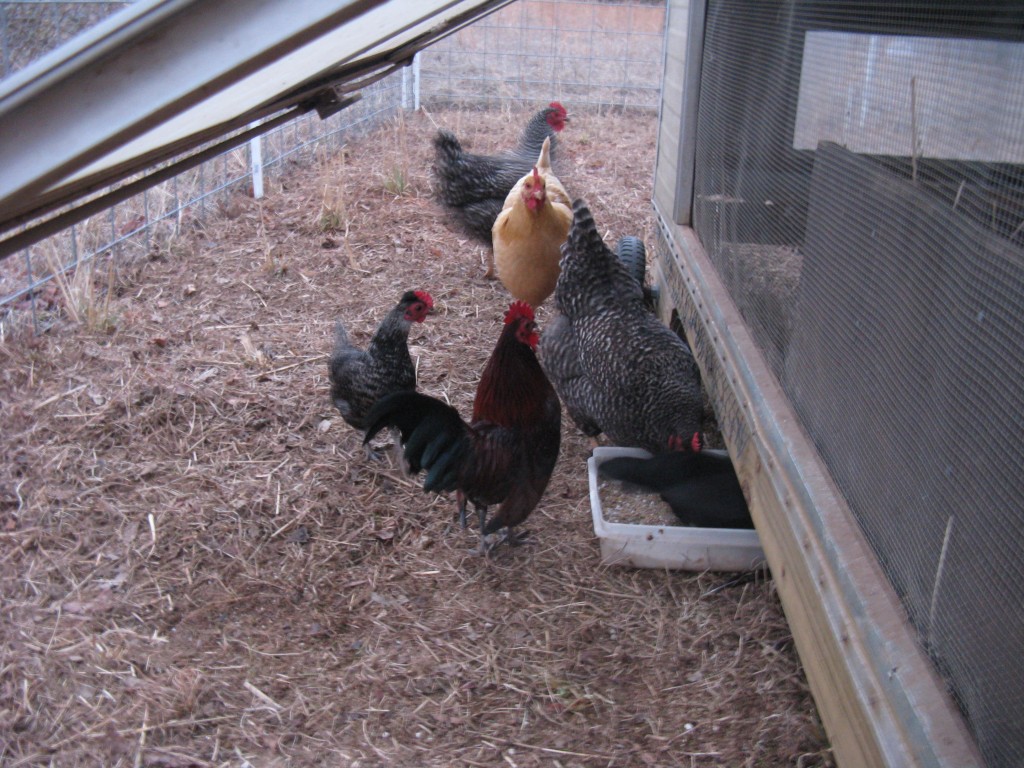
Roosty and his girls cautiously at the food dish.
The tractor is both coop and paddock at the same time, and is either dragged or rolled to the next spot by a farmer or mechanical tractor, depending on the size.
Which brings me to our design considerations for our banty tractor. We have 12 bantams, and according to the internet, 1 acre of land can support anywhere from 50 to 400 chickens. Not too helpful, but it’s a place to start.
Taking the low number of 50 birds, which seems more reasonable for pasture raised chickens, that’s about 1000 sq. ft per bird. Moved every day for a year, that’s 2.75 sq ft. per bird per day.
So a 4′ by 8′ chicken tractor, 32 sq. ft, should be able to handle 10-12 chickens or banty’s, if it’s moved every day. At that size, it should be possible to build a fairly light and predator proof structure, so daily movement shouldn’t be a problem.
Now we just need to think a little more about shape, materials, roosting, egg boxes, and some more functional aspects, and we’ll be on our way towards more pasture raised bantam eggs on the homestead.

